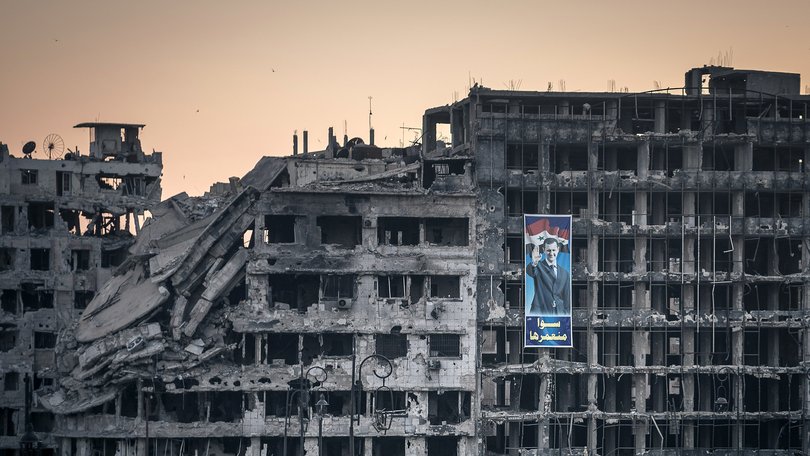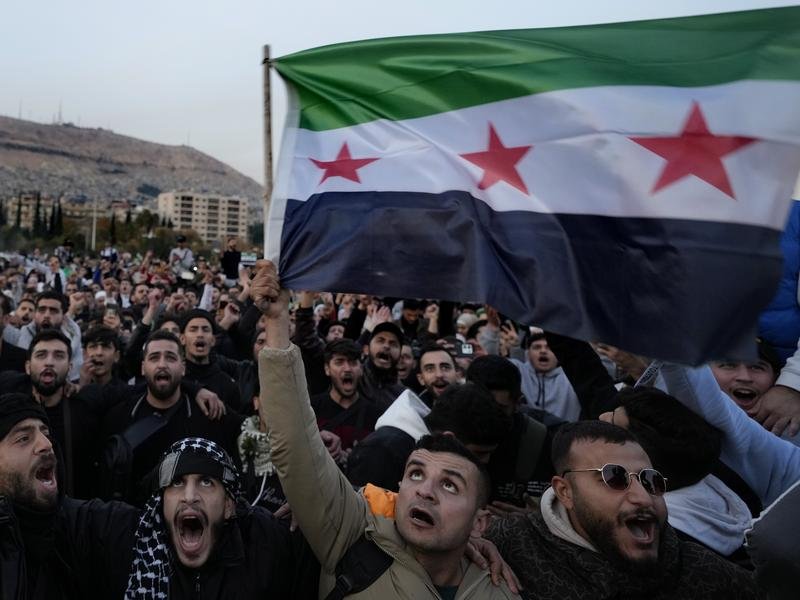THE NEW YORK TIMES: What to know about the countries still fighting in Syria after Assad’s ouster

Great powers have fought for centuries for influence in the territory known today as Syria, each seeing a prize in its strategic position, stretching from the Mediterranean Sea to the Euphrates River and beyond. That struggle continues today.
In Syria’s 13-year civil war, Iran, Russia and the Lebanese militant group Hezbollah backed the brutal regime of President Bashar Assad, while the United States, Turkey and other countries backed various rebel groups.
Now, after a lightning advance by rebels and the rapid-fire collapse of Assad’s government, great powers — albeit with different ones in ascendence — are jockeying for advantage within Syria’s borders. For the first time in years, the skies are empty of Syrian and Russian bombers — but airstrikes by Israel, Turkey and the United States continue.
Sign up to The Nightly's newsletters.
Get the first look at the digital newspaper, curated daily stories and breaking headlines delivered to your inbox.
By continuing you agree to our Terms and Privacy Policy.Here is a look at the foreign countries that have been present in Syria — often operating through local allies — and what they stand to gain and lose from the end of the Assad regime.
Turkey
Turkey has two primary concerns in Syria: Kurds and refugees.
Eastern Syria is home to a sizable ethnic Kurdish population, which the Turkish government sees as allied with Kurdish separatist groups in Turkey. The country is also hosting nearly 4 million Syrian refugees who fled persecution by the Assad government, and President Recep Tayyip Erdogan would like them to return home.
Turkey, which was once the seat of the vast Ottoman Empire that included much of Syria, has backed an array of different rebel groups that hold territory along the Syrian-Turkish border. One of those groups, Hayat Tahrir al Sham, which led the offensive that toppled Assad, had benefited from Turkey’s military presence in the area.
It is unclear whether Turkey approved the group’s decisive offensive.
However, Turkey’s closest ties are with the Syrian National Army, which has functioned almost as a proxy force for Turkey — in the past, the group’s leadership has said it received funding and weapons — and in turn it has pushed the Syrian Kurds, whom the Turks view as a security threat, back from the border. Just in the past few days, as the rebels led by Hayat Tahrir al-Sham took control of the capital, Damascus, fighting flared between the Syrian National Army and the Kurds in northeastern Syria, centered on Manbij, a Kurdish-controlled city near the border with Turkey.
Turkey now seems to be the foreign power with the most access and influence with the armed groups now in charge and in a prime position to pursue its own goals in Syria. That could mean further attacks against the Syrian Kurds, and the return of refugees who are in Turkey.
Israel
Israel has fought three wars with Syria, and has had many more armed confrontations. It holds much of the mountainous territory in the southwest of Syria known as the Golan Heights, an annexation that is not recognized by the United Nations and many other countries.
During the civil war, Israel regularly conducted airstrikes against Iran’s and Hezbollah’s weapons stores and personnel in Syria. In April, it bombed an Iranian Embassy building in Damascus, killing senior Iranian military and intelligence officials
Within hours of the fall of the Assad regime, Israel moved troops into the Golan Heights, advancing beyond the demilitarized zone in its first overt entry into Syrian territory since the 1973 October war. It has also been carrying out airstrikes on stockpiles of chemical weapons inside Syria, along with air defense and missile sites.
Israel has touted its actions against Hamas and Hezbollah as instrumental in the overthrow of the Assad government. But it is not clear that a new government in Damascus, dominated by militant Islamists, will make Israel any safer.
Iran
Iran’s relationship with Syria dates back almost 50 years, when Syria’s president at the time, Hafez Assad, supported Iran in its eight-year war with Iraq. As Iran built a network of like-minded groups across the Middle East as a counterweight against the United States and Israel, Syria was the only state to become part of what Iran called its “Axis of Resistance.”
Syria became Iran’s main overland supply route to transport weapons to Hezbollah in Lebanon. In return, Iran sent military advisers to support the Assad regime during the civil war, along with fighters from its ally Hezbollah and two brigades under the command of Iran’s Quds Forces that was made up of refugees from Pakistan and Afghanistan who had fled to Iran.
With Assad forced to flee Syria, Iran will lose much of its military leverage in Lebanon and Syria. Its hopes for an “Axis of Resistance” that reached the Mediterranean have unraveled — at least for now.

Russia
The Russian relationship with Syria dates to the days of the Soviet Union. At the end of the Cold War, with the United States asserting its presence in Arab countries, Russia saw the Assad government as a crucial ally in the Middle East, one that could provide a counterweight to the American presence.
During the Syrian civil war, Russia made it a priority to keep its ally in power. It also saw the Syrian leader as a bulwark against Islamist extremism from al-Qaida and the Islamic State group. Russia sold weapons to the Assad government, deployed fighters from Russia’s Wagner group, expanded its naval base in Tartus, Syria, and opened an air base near Damascus.
With the demise of the Assad regime, Russia could lose much of its influence in Syria, but analysts say it probably will try to keep its Tartus base, which is its only Mediterranean port for its Black Sea fleet. It is making conciliatory gestures toward the rebel forces who now control the country, and has said it is too soon to make any decisions about the fate of its military bases in Syria.
United States
The U.S.-Syria relationship has never been particularly friendly. The United States severed diplomatic relations in 1967 during the Arab-Israeli war, and placed Syria on its list of state sponsors of terrorism in 1979.
The main U.S. interest in Syria now is the defeat of the Islamic State group, which maintains a presence in the northeastern and central parts of the country. In 2019, during Donald Trump’s first term as president, he pulled most U.S. forces out of Syria, but about 1,000 U.S. Special Operations troops remain, and they work closely with Syrian Kurdish troops trained by the United States.
President Joe Biden said Sunday that the U.S. military has been conducting airstrikes in Syria to keep the Islamic State group from reasserting itself in the power vacuum created by Assad’s ouster. He said the United States would support the region “should any threat arrive from Syria during this period of transition.”
“We’re cleareyed about the fact that ISIS will try to take advantage of any vacuum to reestablish its capability, to create a safe haven,” Biden said. “We will not let that happen.”
This article originally appeared in The New York Times.
© 2024 The New York Times Company
Originally published on The New York Times
